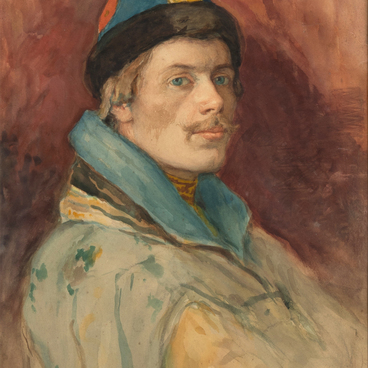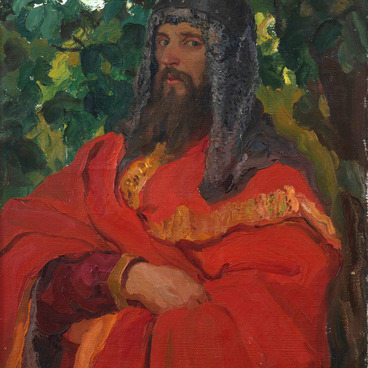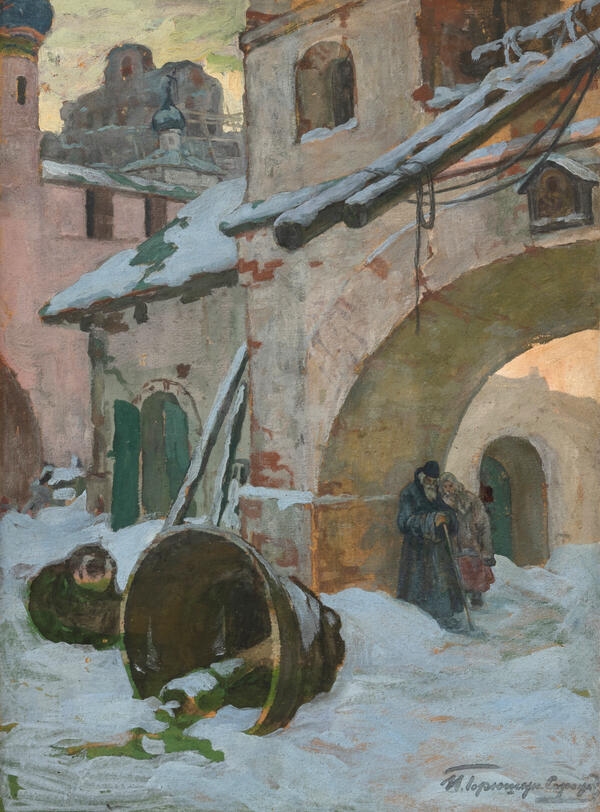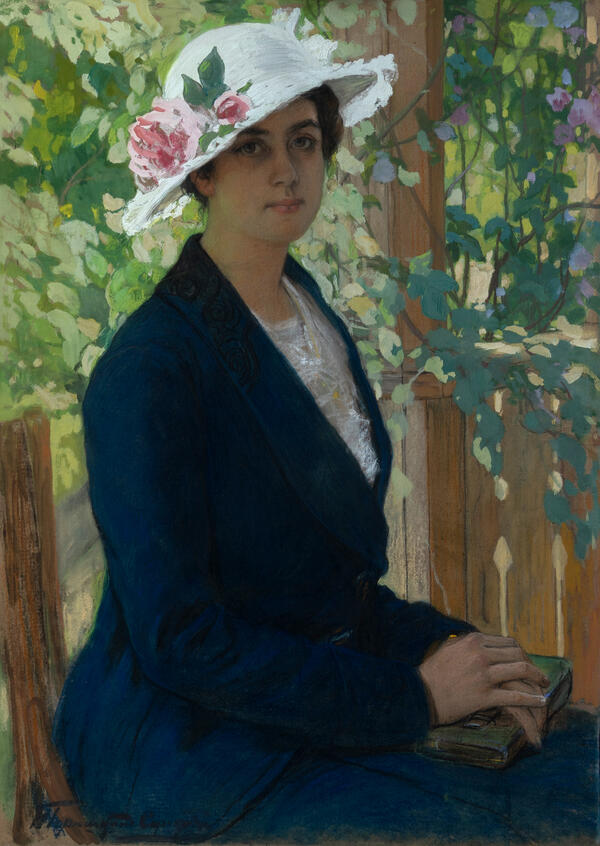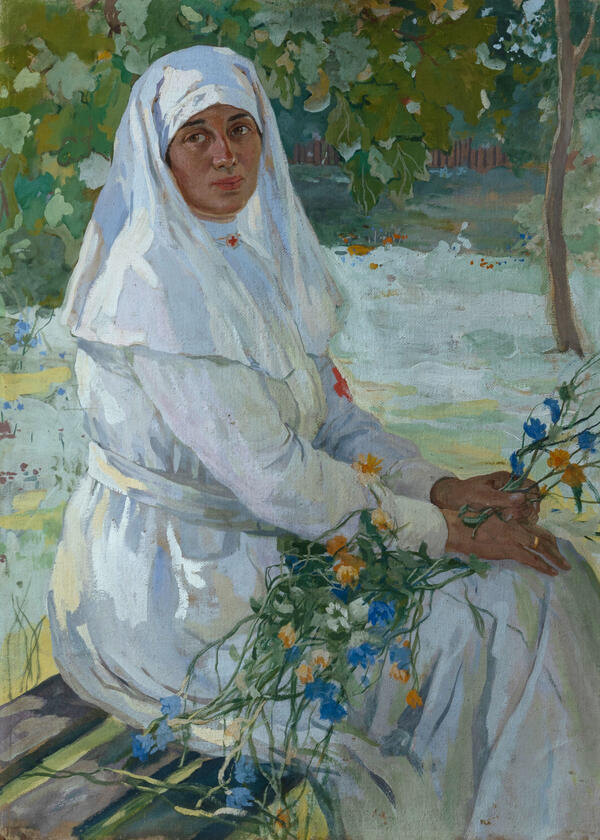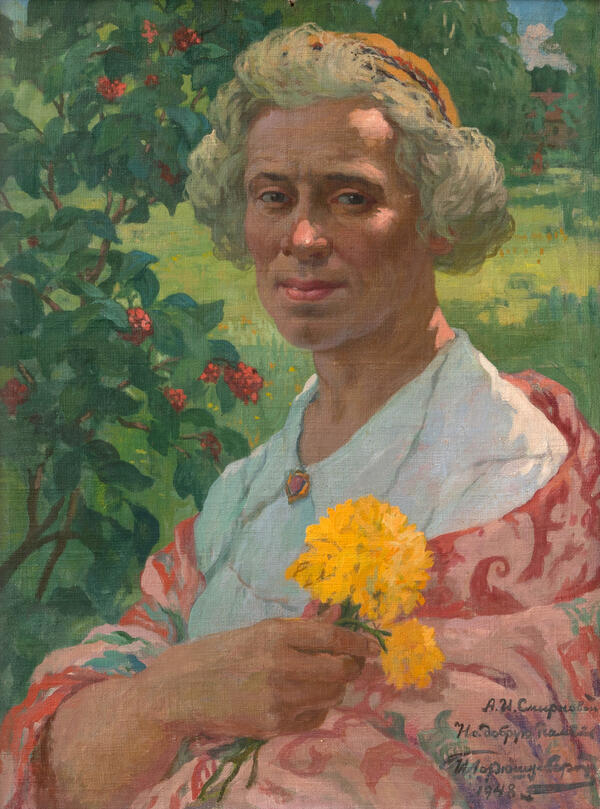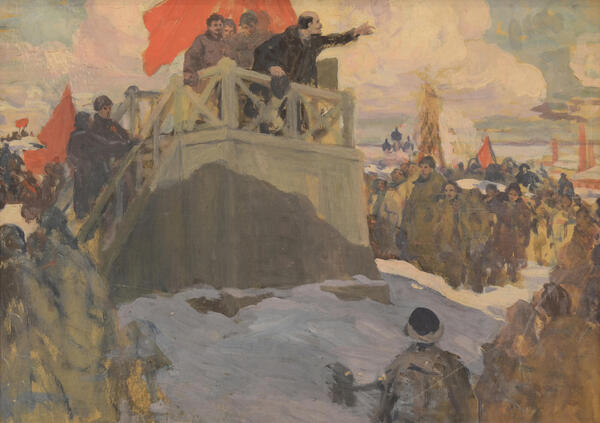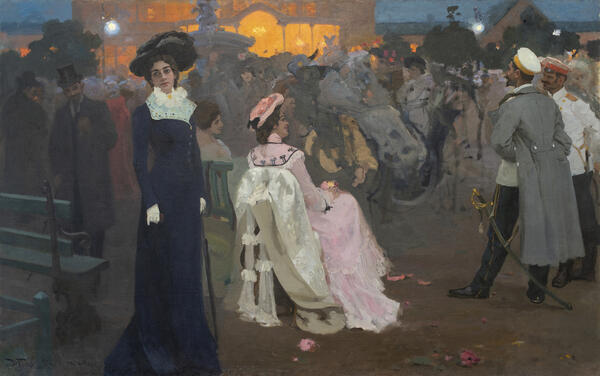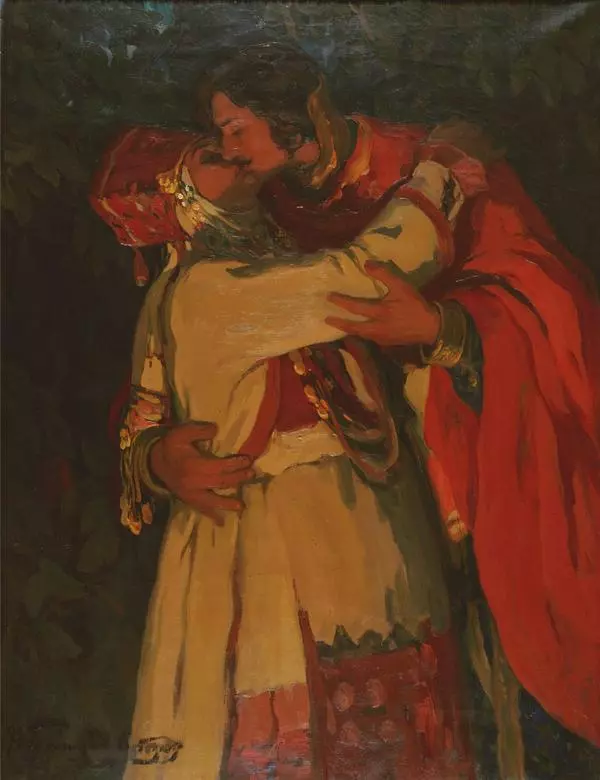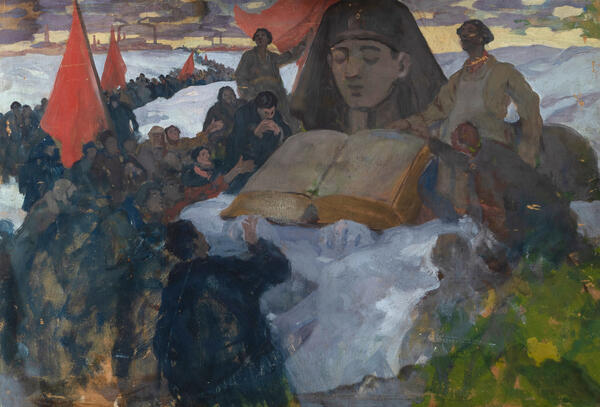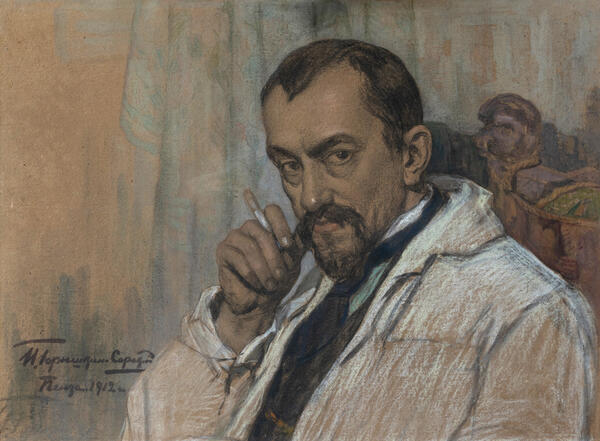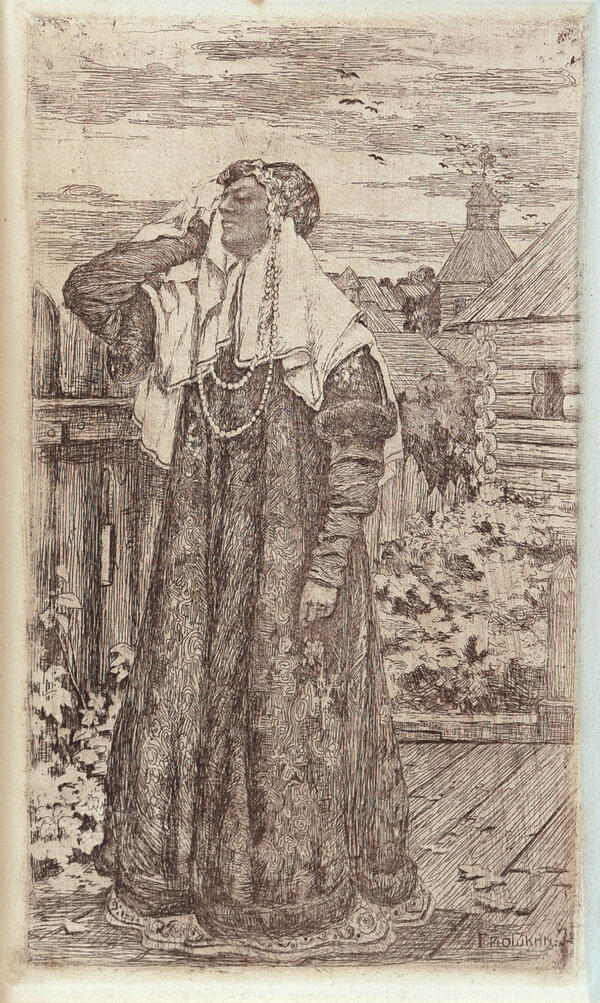During his studies at the Academy of Arts, Ivan Silych Goryushkin-Sorokopudov took up not only painting but also graphic art. He studied etching under the guidance of Vasily Vasilyevich Mate, a Russian painter, draftsman, engraver, academician, and full member of the Academy of Arts.
Ivan Goryushkin-Sorokopudov created sophisticated compositions that manifested his desire to speak about social events, emphasize a particular mood, and express his artistic judgment. A typical work from this period is the 1902 etching “A Violinist”. Later, it was given the second name “Dreams”. The artist often gave his works two titles.
The model who posed for this portrait was Grigory Petrovich Svetlitsky, a friend of Ivan Goryushkin-Sorokopudov and an artist himself. Goryushkin-Sorokopudov created several preparatory sketches, searching for the right mood and composition. Initially, the artwork was painted in oil, but later the artist switched to etching.
Ivan Goryushkin-Sorokopudov was inspired to create this image by the novel “Netochka Nezvanova” by Fyodor Mikhailovich Dostoevsky. In the beginning of the story, a girl called Netochka lived with her mother and her stepfather Efimov in a tiny attic room at the top of a large St. Petersburg house. Efimov was a talented violinist, but he was also arrogant and rude, living off his wife and accusing her of ruining his talent.
Ivan Goryushkin-Sorokopudov attempted to create the image of such a violinist. His face with its deeply sunken eyes expresses sadness and sorrow. Emphasizing the large forehead and nervous hands, the harsh light draws attention to certain details in this gloomy etching and creates a complex movement of shadows that accompany the musician’s anxiety.
The concentrated look on
the musician’s face lets the viewer hear his poignant melody. When Ilya
Efimovich Repin visited the young artist’s home and saw the unfinished work, he
remarked,

